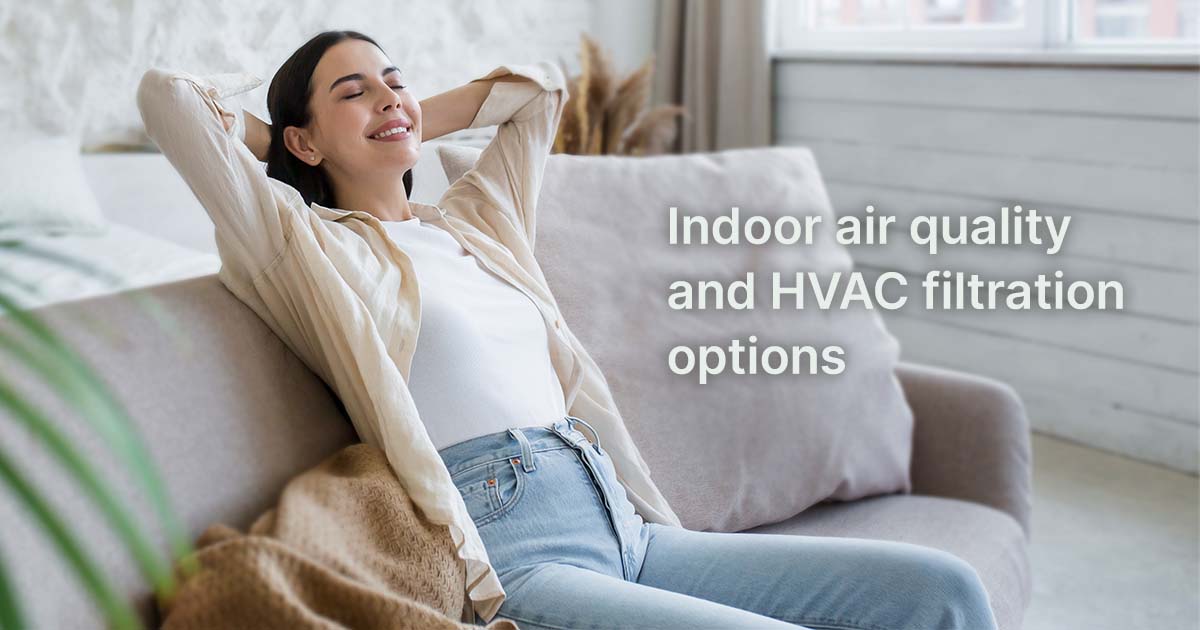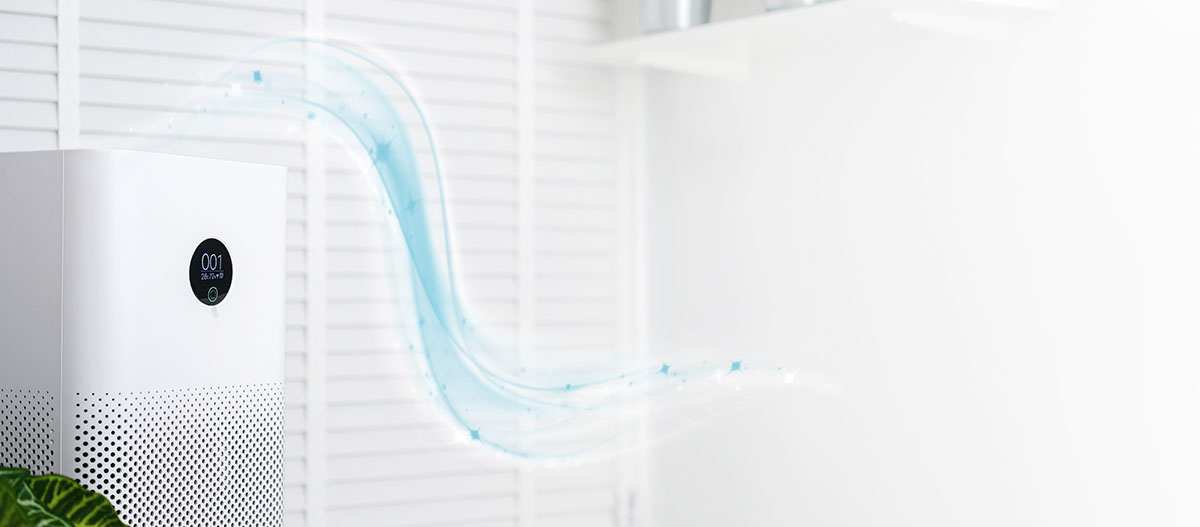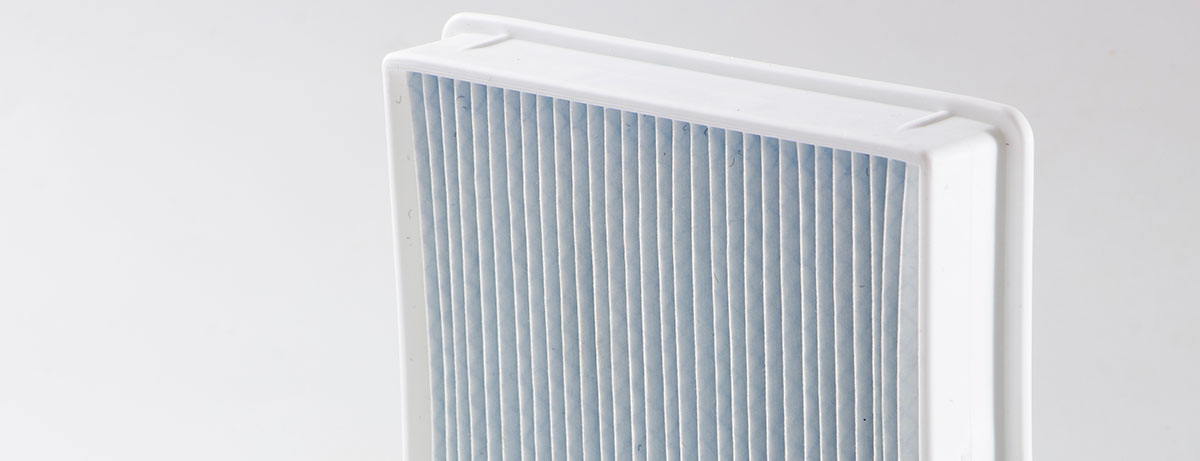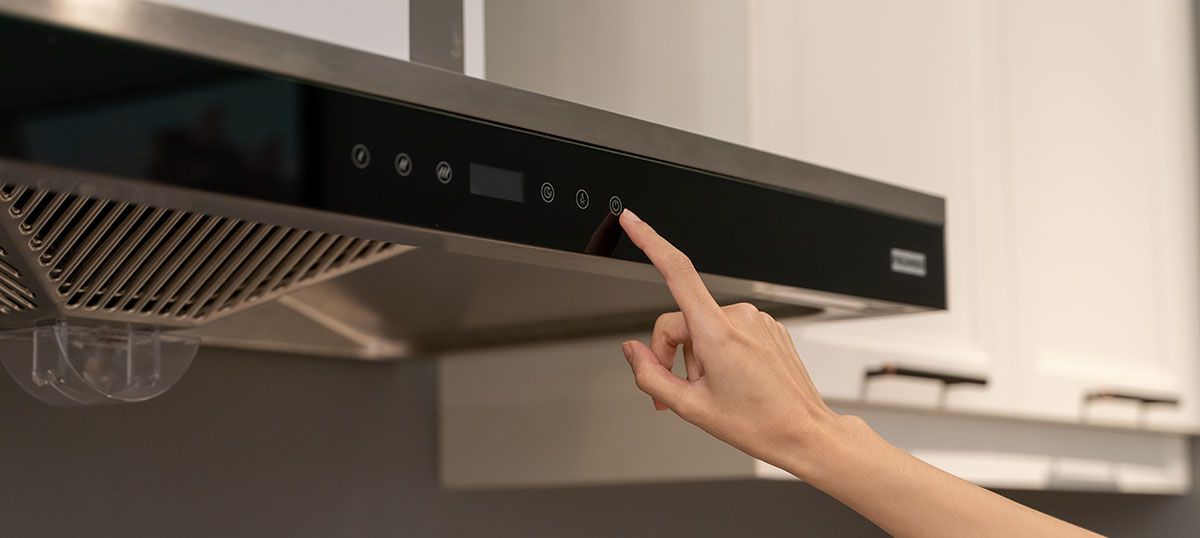
Climate change, wildfires, smog advisories, pollution…those headlines are grim when it comes to the air, we breath. Many of us squirrel away indoors thinking we’re safe. Add in the Canadian winter and we tend to spend a lot of time inside our homes and workplaces; roughly 90 percent! What if I told you that poor indoor air quality is increasingly dangerous to our health and indoor pollutants may be two to five times higher than outdoor levels? Next, you’d probably wonder what exactly these pollutants are.
Some air pollutants move from the outside in, while others are created by regular household activities like cooking, cleaning, second-hand smoke, furniture, renovation materials, and everyday products. What makes it even trickier than the source, indoor air pollutants come in different forms like particles or gasses, including volatile organic compounds (VOCs).
The most common contaminants include mold, pollen, and formaldehyde. What’s even worse is indoor environments contain particulate matter, ranging from PM2.5 (fine) and PM10 (coarse). Well, what does that mean exactly? It means anything PM10 and under you can inhale, damaging your lungs and heart.
Scientific studies link PM exposure numerous health issues including:
Eye, nose and throat irritation
Early death in people with heart or lung disease
Nonfatal heart attacks
Irregular heartbeat
Worsening asthma
Lung impairments
Irritation of airways, coughing or trouble breathing
Knowing this, the importance of clean indoor air cannot be overstated. That’s why homeowners should seriously consider indoor air quality testing and assessment as their first step. Once you know what you’re dealing with you can seek professional advice on whether you should invest in portable or whole-house air filtration options. Let’s begin with an overview on these main options.

Improving indoor air quality starts with filtration by reducing or removing pollutants and ventilating with clean outdoor air.
If your house does not have a central HVAC system, portable room air filters are a good option. Portable air cleaners, purifiers or sanitizers, will work for a single room or area. Be sure to choose a filter that has a clean air delivery rate or CADR that is big enough for the space. The higher the CADR, the larger the room and the more particles it can filter. High CADRs in portable air cleaners are usually achieved by using a high-efficiency particulate air (HEPA) filter.
If you are looking to filter gasses, pick a portable air cleaner that uses an activated carbon filter or other filter specifically for gasses. If the cleaner has a high CADR and a carbon filter it can work on both particles and gasses. Portable air cleaners are priced from $150 to as much as $1,500. Plus, you’ll need to replace the HEPA filters annually which can cost from $40 to more than $100 per filter per year.
But why just deal with one room? Creating a healthy indoor environment with HVAC filtration will improve the air quality of your entire home. It’s important to note that furnace and HVAC filters clean the air only when the system us running, which means when you are actively heating or cooling your home.
For proper HVAC filter maintenance and replacement, be sure to follow the manufacturer's instructions.
Think of your ductwork like a road system designed to reach every space in your home. This makes is the most efficient way to filter indoor air, tapping into the roads that send your heating and air-conditioning throughout the house. HVAC filtration options will trap particles like dust, pollen, mold, pet dander and more as the air passes through.
It’s important to understand MERV ratings and HVAC filters. If you to make HVAC filter upgrades for improve air quality, pick one with at least a Minimum Efficiency Reporting Value (MERV) 13 rating, or as high a as your HVAC system can use.
HVAC filters also come in a variety of sizes, although there are some standard options. Filters are measured by there thickness or depth, in addition to its height and length. The exact size you need depends on the HVAC system you have.
Pull out the existing filter and measure or reference the user manual. Generally, filters will have a thickness of 1 inch for regular systems and 5 inches for larger HVAC systems. But the overall size of a filter can vary in height and length combinations.
If you don’t have your product’s manual, you may want to check with a technician at Advanced Heating and Coolin to figure out which high efficiency filter fits best.
Here are the seven main types of HVAC filters on the market.
1 - Flat spun glass filters: These are the regular type of furnace filters you are probably already using. It will capture the large particles like dust and needs to be changed every month. It will not filtrate the particulate matter that is most damaging to human health.

2. Pleated filters: Pleated filters are often electrostatic air filters used in HVAC. The electrostatic charge works better for pet dander and allergen reduction in HVAC systems. These can be changed every two to three months. Or you can also purchase reusable units that you wash every couple of months instead of replacing.
Electrostatic filters are great at cleaning smaller pollutants but struggle against dust or mold spores. If anyone in your family has respiratory issues these filters are not for you.
3 - Extended media filters: First, you’ll need a professional to insert this right into the ductwork. Installation costs run from $400-$600, while the filter itself averages around $50-60 and lasts one year. Thes filters are 8 inches thick and use an accordion style of media to make them more effective than regular fibreglass filters.
Media filters are easy to maintain and good for filtering bacteria and small airborne pollutants. By sealing the filtered dirt into the filter, it prevents it from circulating in your HVAC system. Study and cost effective, media filters only need to be changed once or twice a year.
4 - Electronic filters: These bad boys also require some professional help and are installed into the ductwork. Not to be confused with electrostatic filters, these high-tech units use a high voltage current at the front to put an electrical charge on particles as the air passes through. At the back of the unit an opposite charged collector plate grabs the particles like a magnet.
Electronic filters work well on smoke particles and never need replacing. But the collector plates will need to be cleaned in soapy water every few months. Total cost is $600 to $1000 to purchase and install and need a 120-volt electrical outlet for power.
Ozone Generators that are marketed as Air Cleaners intentionally produce the gas ozone. There is no federal government agency approval for these devices in homes.
5 – Ultraviolet filters: UV air purification in HVAC systems not only remove air pollutants but germs too. UV light is an effective airborne virus and germ control in HVAC. As soon as it hits the light, bacteria, viruses and even mold spores are killed using germicidal radiation.
UV filters do not work on more common pollutants, like dust or allergens and are ineffective against gasses, fumes, and cigarette smoke. Sold as built in components or as an add on to an electrostatic precipitator these units typically cost $400-$800.
6- Washable filters: If you are looking for an environmental option, washable filters are the way to go. You will pay more upfront but if you wash them according to the manufacturers instructions these filters will work effectively and for years.
It’s important after washing to let the filter dry completely to avoid any moisture from getting inside your HVAC system to prevent mold and mildew growth. Most washable filters come with a low MERV rating but are still effective if severe health issues are not a concern.
7- High efficient particulate air (HEPA) filters: HEPA filters remove up to 99.97% of airborne allergens and pollutants — including mold spores and dust that are as small as 0.3 microns. Add in a MERV rating close to 16 and these are the Rolls Royce of air filters. For families with asthma, severe allergies or respiratory issues HEPA filters show the most of benefits of HVAC filtration.

Other steps to you can take to improve indoor air quality.
Ensure any gas appliances are vented properly, this includes gas stoves, fireplaces and furnaces.
Turn on the exhaust fan every time you cook – make sure it vents directly outside!
If you have a woodstove make certain the doors fit tightly and that it meets emission standards.
Book an annual inspection and servicing for you furnace, flues and chimneys.
Check the manufacturing directions on all filters and change accordingly.
Never smoke indoors.
Purchase and install carbon monoxide alarms.
Control the humidity in your home to discourage mold growth.
At the end of the day, you’ll need to do what’s right for your family and your budget. Proper ventilation and air exchange is key to improving indoor air quality. When combined with reducing indoor air pollutants with HVAC filtration you can make a big difference.
Although we didn’t discuss this in this post, smart air quality monitoring in HVAC systems is also available, demonstrating just another product line that is improving with smart technology.
Looking for more ways to improve your indoor air quality?
Check out our blog post "How to Improve Your Indoor Air Quality and Enhance Home Comfort" for valuable insights and additional techniques to enhance the air quality in your home.
